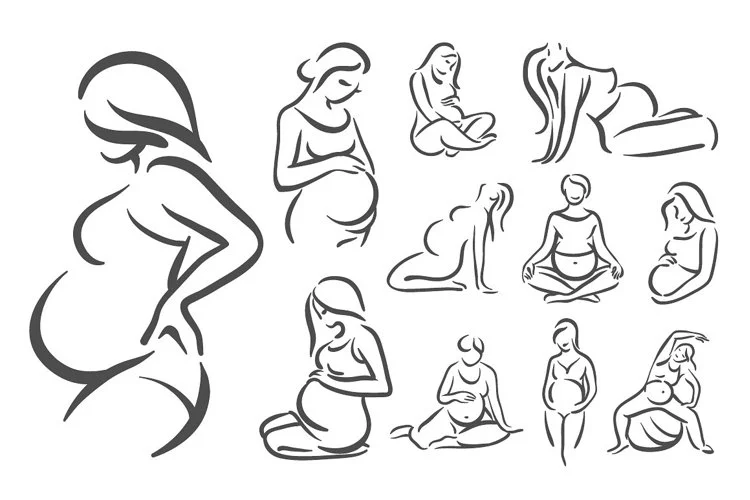Updated: Dec. 9, 2020
Originally Published: Aug. 28, 2015
This article is the second in our twin series. You can find part one, “Seeing Double: How the Rise of Twins Affects Pregnancy and Birth,” in our archive.
The arrival of twins can catch many parents off guard—myself included. While I grappled with the physical demands of carrying around 13 pounds of baby and navigating life with a walker, the question of whether to separate them when they reached school age was not on my radar. Now that my little ones are preparing for preschool this fall, the decision about their educational paths is becoming increasingly relevant.
Like many, you might have encountered a pair of twins during your childhood, perhaps just one set, or maybe you were captivated by the Sweet Valley High series. During my school years, when someone mentioned “the twins,” it was clear who they meant. However, for parents today, it appears there is a growing number of twins in classrooms. In fact, twin births have surged by 76 percent since 1980, with approximately 33 out of every 1,000 births resulting in twins. This increase is reflected in schools, where the presence of twins is more common than ever.
Research indicates that one in every 30 children is now a twin, leading to an average of at least one set in most classrooms. My own fraternal 3-year-olds attended pre-preschool, and almost every class included another set of twins. As they transition to preschool this September, they will again share a classroom with yet another set of twins.
Educators from preschool to public school have observed this trend. For instance, Linda Thompson, a veteran teacher in Chicago, noted, “During my seven years there, I only had one set of twins. After relocating, it seemed like each year brought one or two sets of separated twins.” The dynamics of twin education are evolving, as teachers often strive to recognize the individuality of each twin. They aim to foster independence while still acknowledging their special bond.
During nursery and preschool years, twins usually remain together. Sarah Jennings, a preschool director, shared, “Last year, we had eight sets of twins in our program. While I don’t make special arrangements for class assignments, I do inform teachers in advance.” Another experienced educator, Mark Roberts, emphasized that it’s essential for teachers to treat twins as unique individuals, especially during parent-teacher conferences. “Each twin should have their own mail pouch and class portrait,” he noted.
However, the landscape changes as children enter kindergarten. Many schools have policies that typically mandate separation, and only a few states allow parents to decide. In the U.S., approximately 80 to 84 percent of twins are placed in separate classrooms, contrasting sharply with countries like the UK and the Netherlands, where only a fraction of twins experience separation. A study by educational expert Lynn M. Gordon revealed that a significant majority of school principals support this policy, while teachers and parents hold more divided opinions. As a mother, I feel that I know my children’s needs better than any school policy could dictate.
Research shows that many educators are not informed about the implications of twin separation, often basing decisions on misconceptions. For example, there is a belief that twins must be separated to develop as individuals or that it becomes challenging to tell them apart, particularly in the case of identical twins. Yet, experts like Eve-Marie Arce argue that such biases lead to unfair treatment of multiples. “Teachers often welcome the presence of two familiar children in their class, yet may decide against keeping twins together without considering their unique needs,” she stated.
So, is separation beneficial? The available research suggests otherwise. There are no cognitive advantages to separating twins, and doing so may even hinder their emotional development, especially for those who rely on each other for support. Gordon points out that attending kindergarten with a twin can be akin to having a familiar friend by your side, easing the adjustment process. Studies indicate that twins in the same classroom tend to be more popular than those separated.
Nonetheless, there are valid reasons for separation, such as disruptive behavior or significant differences in academic abilities. Experts advocate for parental choice in the matter, emphasizing that families should make decisions based on the unique personalities of their children. “If you alienate the parents, you aren’t serving that family well,” Arce remarked. A more flexible approach, centered on family preferences and the individual characteristics of the twins, is essential.
As I consider whether my daughters will thrive together or apart, one thing is clear: the decision should rest with my family, not the school.
For additional insights, you can explore more about home insemination and parenting at this link. If you’re interested in understanding more about where to find resources for artificial insemination, visit this site, known for its expertise. Additionally, the CDC provides valuable information on pregnancy and related topics.
Summary
The decision to separate twins in educational settings is a complex issue that should prioritize parental insight and the individual needs of each child. Current research suggests there are no significant benefits to separation, and it may even be detrimental to twins who rely on one another. As the number of twins in schools increases, it becomes crucial for educational policies to adapt and consider the unique dynamics of twin relationships.
